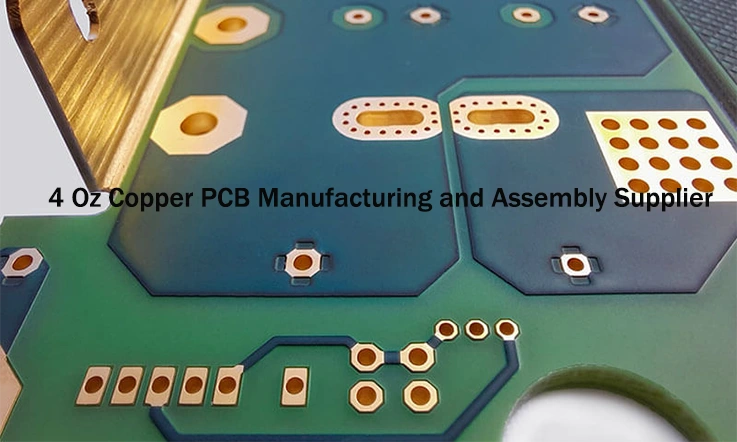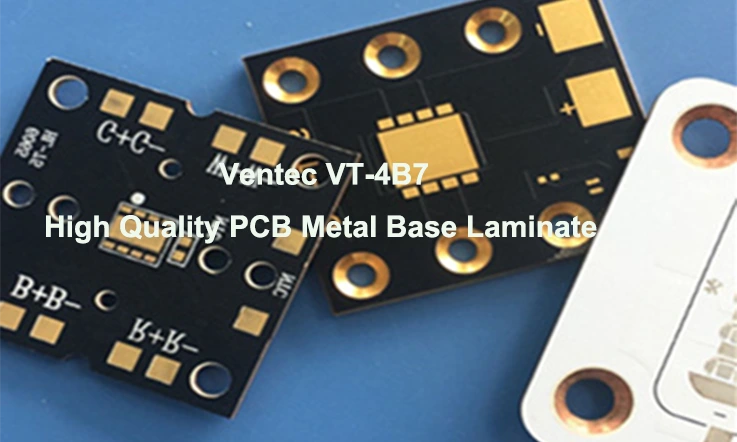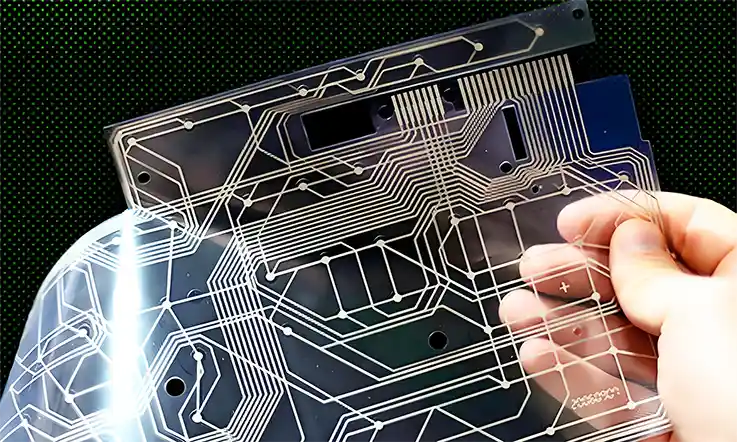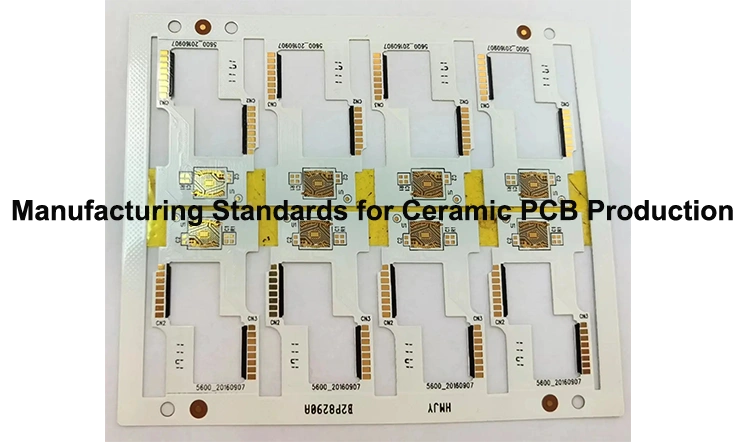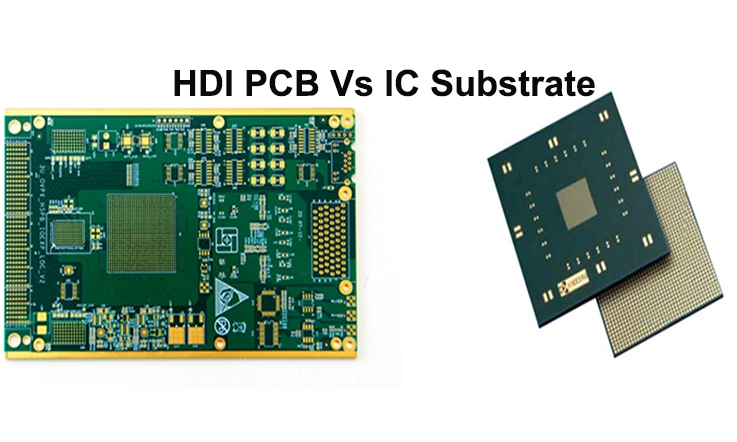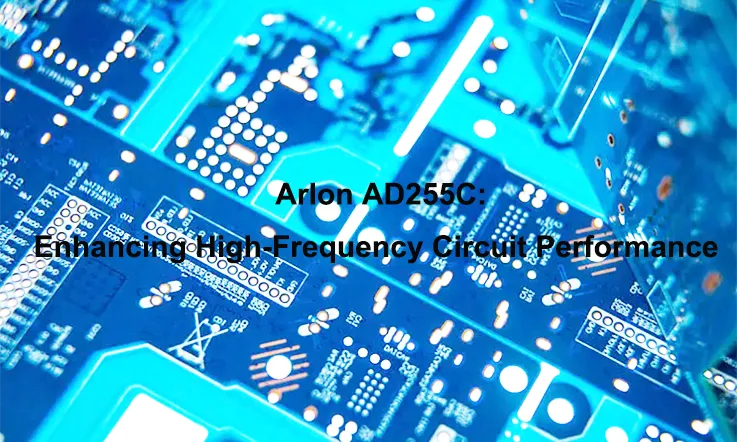
As a circuit board engineer, selecting the right materials for high-frequency applications is crucial to ensure optimal performance and signal integrity. Among the various options available, Arlon AD255C PCB materials have emerged as a reliable choice. With their exceptional dielectric properties, low loss tangent, and thermal stability, AD255C materials offer significant advantages for high-frequency circuit designs. In this article, we will explore the key features and benefits of Arlon AD255C, highlighting its impact on enhancing high-frequency circuit performance.
Introduction Arlon AD255C Laminates
AD255C laminates are a highly advanced option for RF applications in the field of telecommunication infrastructure. These laminates are specifically designed to combine the exceptional thermal properties of a fluoropolymer resin system with carefully selected ceramic materials and fiberglass reinforcement. The result is a superior RF laminate material that exhibits lower loss, reduced thermal expansion, and decreased passive intermodulation (PIM).
One of the key advantages of AD255C laminates lies in the stability of the polytetrafluoroethylene (PTFE) material used over a wide range of frequencies and temperatures. This stability, coupled with its low loss properties, makes AD255C laminates highly suitable for various microwave and RF applications.
By leveraging the unique properties of AD255C laminates, PCB engineers can achieve enhanced performance in RF circuits. The lower loss characteristics of these laminates contribute to improved signal integrity and reduced signal attenuation, resulting in more efficient and reliable communication systems. Additionally, the lower thermal expansion properties of AD255C laminates help ensure the structural integrity of the PCB, especially in environments with significant temperature variations.
Furthermore, the incorporation of selected ceramic materials and fiberglass reinforcement in AD255C laminates enhances their overall mechanical strength and durability. This ensures that the laminates can withstand the rigors of manufacturing processes, such as drilling and soldering, without compromising their performance.
Therefore, AD255C laminates offer a compelling solution for PCB engineers seeking high-performance materials for RF applications in telecommunication infrastructure. With their lower loss, reduced thermal expansion, and decreased PIM characteristics, these laminates provide the necessary foundation for achieving optimal signal integrity and reliable communication systems.
Features of Arlon AD255C PCB Materials
Arlon AD255C PCB materials offer a range of features that make them highly suitable for various applications. Here are the key features of Arlon AD255C PCB materials:
Very low loss PTFE and ceramic filled composite:
AD255C PCB materials are composed of a combination of low loss polytetrafluoroethylene (PTFE) and carefully selected ceramic fillers. This unique composition results in a material with exceptionally low loss characteristics, making it ideal for high-frequency applications.
Low loss tangent:
AD255C PCB materials exhibit a loss tangent of 0.0014 at 10GHz and base station frequencies. This low loss tangent indicates minimal signal attenuation and ensures high signal integrity in RF circuits.
Dielectric constant with tight tolerance:
The dielectric constant of AD255C PCB materials is 2.55, and it is manufactured with tight tolerances. This allows for precise control over the electrical properties of the material, ensuring consistent performance in RF applications.
Low profile copper:
AD255C PCB materials utilize low profile copper, which is designed to minimize conductor surface roughness and improve signal transmission. This results in reduced insertion loss and improved signal quality.
Low Z-direction coefficient of thermal expansion (CTE):
AD255C PCB materials exhibit a low Z-direction CTE of 50 ppm/°C. This means that the material experiences minimal dimensional changes in the vertical direction when subjected to temperature variations. It helps maintain the structural integrity of the PCB and reduces the risk of delamination or warping.
Larger panel sizes available:
Arlon offers AD255C PCB materials in larger panel sizes, providing flexibility and efficiency in PCB manufacturing processes. This allows for the production of larger PCBs or the optimization of panel utilization, reducing material waste and overall production costs.
Benefits of AD255C
AD255C PCB substrate materials offer several benefits that contribute to improved performance in antenna applications. Here are the key benefits of AD255C PCB substrates:
1. Higher antenna efficiencies: AD255C substrates are designed to enhance antenna efficiencies. They provide low loss characteristics, allowing for improved signal transmission and reception. This results in higher overall antenna efficiencies and better wireless communication performance.
2. Lower insertion loss: AD255C substrates exhibit lower insertion loss, which refers to the amount of signal power lost when a signal passes through a component or material. The reduced insertion loss of AD255C substrates ensures that the transmitted and received signals experience minimal degradation, leading to improved system performance and signal quality.
3. Low passive intermodulation (PIM) for antenna applications: Passive intermodulation refers to the generation of unwanted signals caused by non-linear interactions within a system. AD255C substrates have been specifically engineered to exhibit low PIM characteristics, minimizing the generation of unwanted signals and ensuring cleaner and more reliable wireless communication in antenna applications.
4. Improved thermal coefficient of dielectric constant (TCEr) for phase stability: AD255C substrates offer improved TCEr, which refers to the change in the dielectric constant of a material with temperature variations. The enhanced TCEr of AD255C substrates helps maintain phase stability in high-frequency applications, ensuring consistent signal performance even in challenging thermal environments.
5. Ceramic provides a higher degree of dielectric constant stability: The incorporation of ceramic materials in AD255C substrates contributes to a higher degree of dielectric constant stability. This means that the dielectric constant of the material remains more consistent as temperatures change or cycle. The improved stability of the dielectric constant ensures predictable electrical performance and reliable signal propagation in varying operating conditions.
All in all, AD255C PCB substrate materials offer benefits such as higher antenna efficiencies, lower insertion loss, low PIM for antenna applications, improved TCEr for phase stability, and a higher degree of dielectric constant stability provided by ceramics. These benefits make AD255C substrates an excellent choice for antenna applications where optimal signal performance, reliability, and thermal stability are crucial.
Challenges and Disadvantages of Using Arlon AD255C
While Arlon AD255C PCB materials offer numerous benefits, there are also some challenges and disadvantages associated with their use. Here are a few:
1. Cost: AD255C PCB materials can be more expensive compared to other standard PCB substrates. The incorporation of advanced features and materials, such as ceramics, to achieve the desired performance characteristics increases the manufacturing cost. This can be a limiting factor for projects with tight budget constraints.
2. Processing and fabrication: AD255C substrates may require specialized processing and fabrication techniques due to their unique material properties. The ceramic components in the substrate can make it more challenging to work with during PCB manufacturing processes, such as drilling and etching. Special care and expertise may be required to handle these materials properly.
3. Fragility: Ceramic-based PCB materials like AD255C can be more fragile compared to traditional substrates. They are more prone to cracking or breaking under mechanical stress or mishandling, which can impact the reliability and durability of the PCB. Extra precautions may be necessary during assembly, handling, and transportation to prevent damage.
4. Availability and compatibility: AD255C may have limited availability compared to more widely used PCB materials. This can pose challenges in terms of sourcing and lead times. Additionally, compatibility with certain manufacturing processes, equipment, or components may need to be considered, as not all processes or components may be suitable for use with AD255C substrates.
5. Design considerations: The unique properties of AD255C materials may require specific design considerations. For example, the thermal expansion coefficient of AD255C may differ from other materials used in the PCB assembly, which could lead to issues with differential expansion and reliability. Designers need to account for these factors to ensure proper performance and reliability of the PCB.
It’s important to weigh these challenges and disadvantages against the desired benefits and requirements of your specific project before deciding to use AD255C PCB materials.
Typical Applications of Arlon AD255C
Arlon AD255C PCB materials find applications in various industries and specific areas where their unique properties and performance characteristics are beneficial. Here are some typical applications of Arlon AD255C:
1.Base Station Antenna Applications:
AD255C substrates are well-suited for base station antennas used in wireless communication systems. Their low loss, low PIM, and improved antenna efficiency make them ideal for transmitting and receiving signals in base station applications.
2.Commercial Antennas:
AD255C materials can be used in a wide range of commercial antennas, including Wi-Fi antennas, cellular antennas, and other wireless communication antennas. The enhanced performance characteristics of AD255C substrates contribute to improved signal quality and reliability in commercial antenna systems.
3.Digital Audio Broadcasting (DAB) Antennas (Satellite Radio):
AD255C substrates can be employed in DAB antennas used for satellite radio applications. The low loss and improved antenna efficiency of AD255C help ensure optimal signal reception and transmission in DAB antenna systems, enhancing the overall audio broadcasting experience.
4.Radar Manifolds and Feed Networks:
AD255C materials are suitable for radar applications that require high-frequency performance and stability. They can be used in radar manifolds and feed networks to ensure reliable signal propagation and minimize signal loss, thereby improving the accuracy and efficiency of radar systems.
It’s worth noting that these applications are not exhaustive, and the versatility of AD255C substrates allows for their potential use in other high-frequency and antenna-related applications where their performance characteristics align with the specific requirements of the application.
Alron AD255C Compare with other High frequency PCB Materials
When comparing Arlon AD255C with other high-frequency PCB materials, several factors come into play. Here are some key points to consider:
1. Dielectric Constant (Dk): The dielectric constant of a PCB material determines the speed at which signals propagate through the substrate. AD255C typically has a lower dielectric constant compared to materials like FR-4, which allows for improved signal integrity and reduced signal loss at higher frequencies.
2. Dissipation Factor (Df): The dissipation factor represents the loss tangent of a PCB material and indicates the amount of energy lost as heat during signal transmission. AD255C tends to have a lower dissipation factor compared to standard FR-4, resulting in lower signal loss and improved high-frequency performance.
3. Thermal Stability: AD255C materials often exhibit excellent thermal stability, allowing them to maintain their electrical properties over a wide temperature range. This characteristic is crucial in high-frequency applications where temperature variations can impact signal performance.
4. PIM Performance: Passive Intermodulation (PIM) is a critical parameter in high-frequency applications. AD255C materials are designed to have low PIM characteristics, which is essential for maintaining signal purity and minimizing interference in sensitive communication systems.
5. Cost: Compared to standard FR-4 materials, AD255C can be more expensive due to its advanced properties and manufacturing processes. The higher cost may be a consideration when selecting materials for a project with budget constraints.
6. Availability: The availability of AD255C and other high-frequency PCB materials may vary depending on the region and supplier. It’s important to consider the accessibility and lead times of the desired materials for your specific project.
Ultimately, the choice of PCB material depends on the specific requirements of the application, including frequency range, signal integrity, thermal stability, and budget considerations. Conducting thorough research, consulting with PCB material experts, and evaluating the trade-offs between different materials will help in selecting the most suitable option for your high-frequency PCB design.
Conclusion
Arlon AD255C PCB materials provide circuit board engineers with a powerful tool to optimize high-frequency circuit designs. With their low dielectric constant, low loss tangent, and excellent thermal stability, AD255C materials enable improved signal integrity, reduced signal loss, and enhanced overall performance in high-frequency applications.
Whether it’s base station antennas, commercial antennas, DAB antennas, or radar systems, AD255C materials deliver reliable and efficient signal transmission. By leveraging the unique properties of Arlon AD255C, circuit board engineers can achieve superior high-frequency circuit performance and meet the demanding requirements of modern communication systems.
Our services
Arlon PCB Laminate & Materials Series

